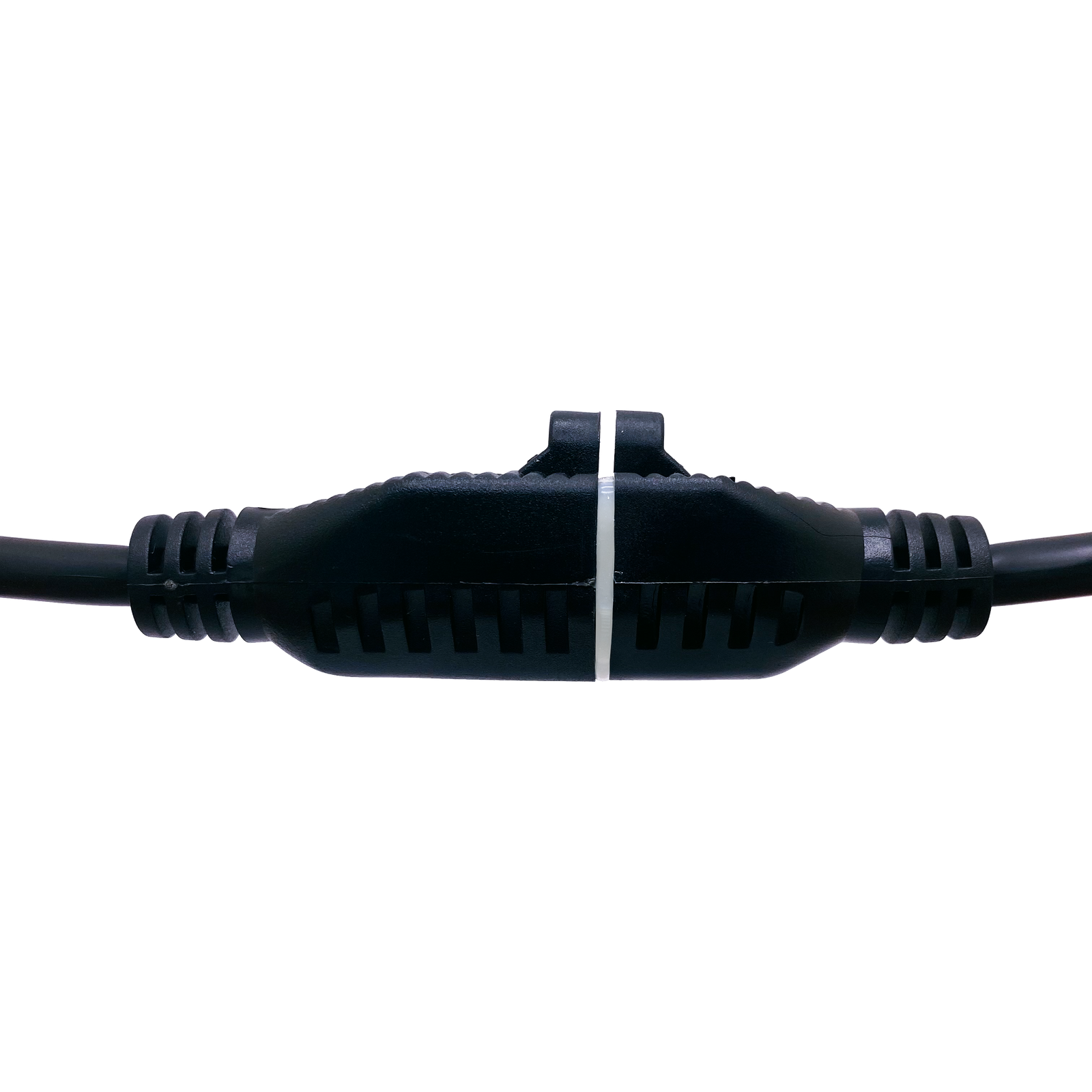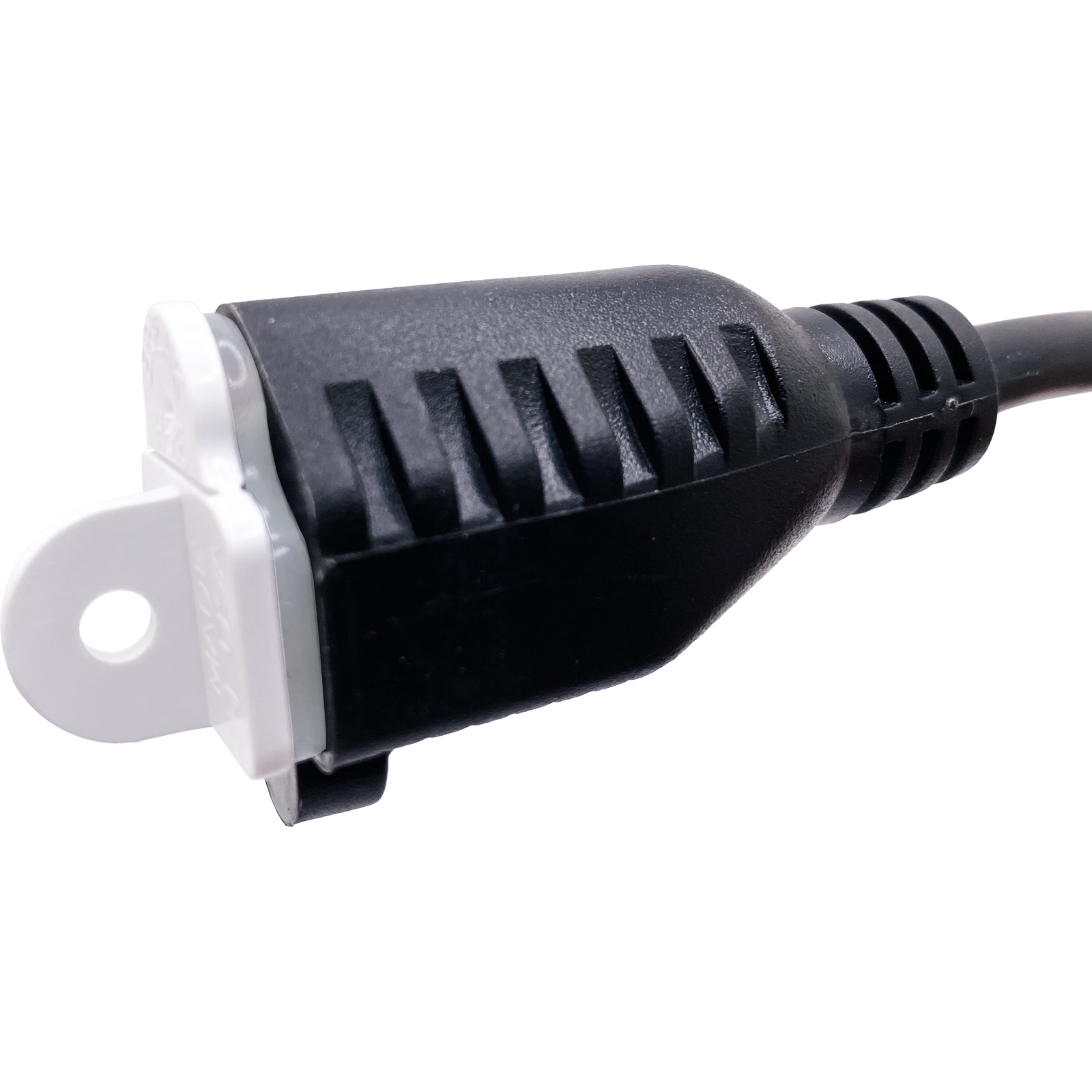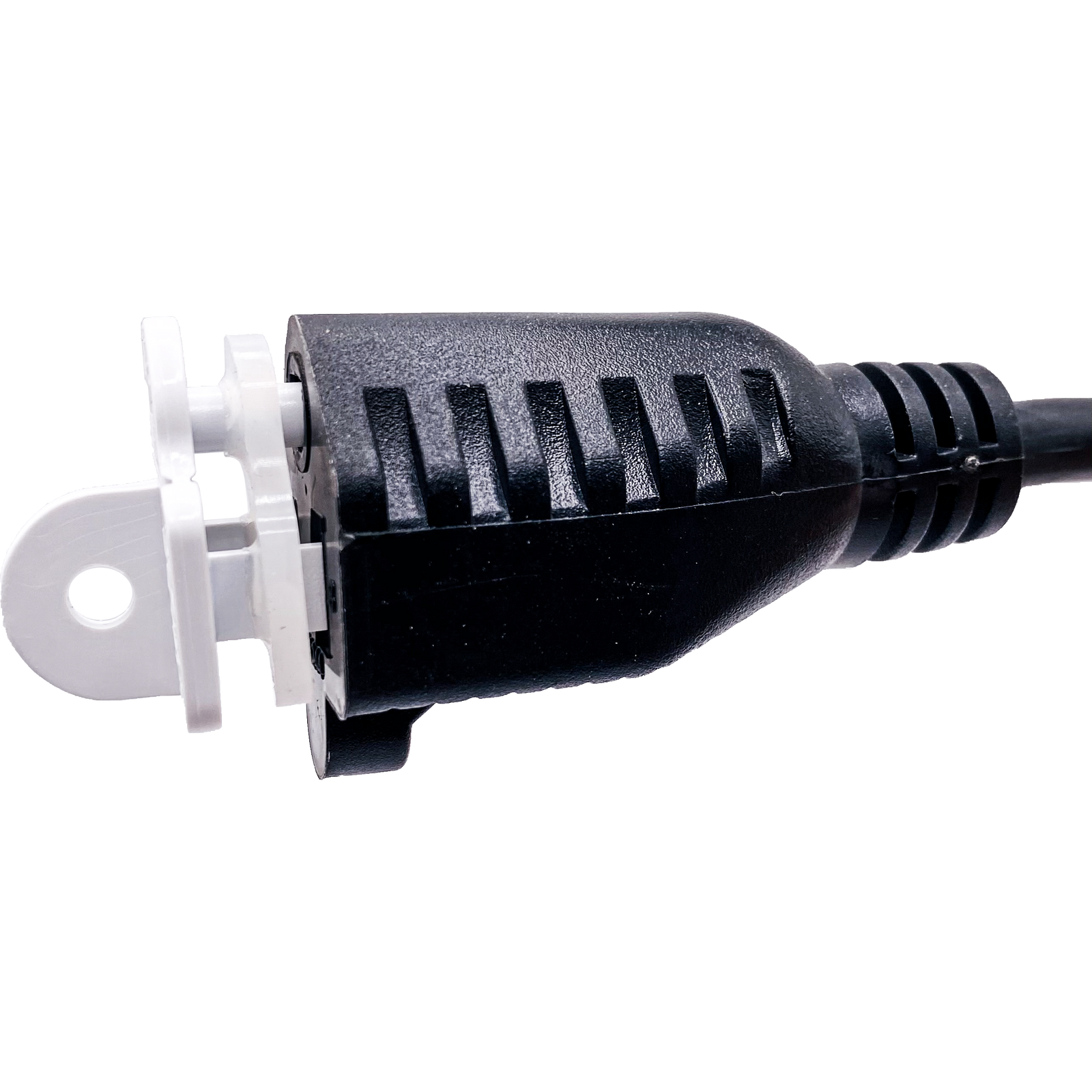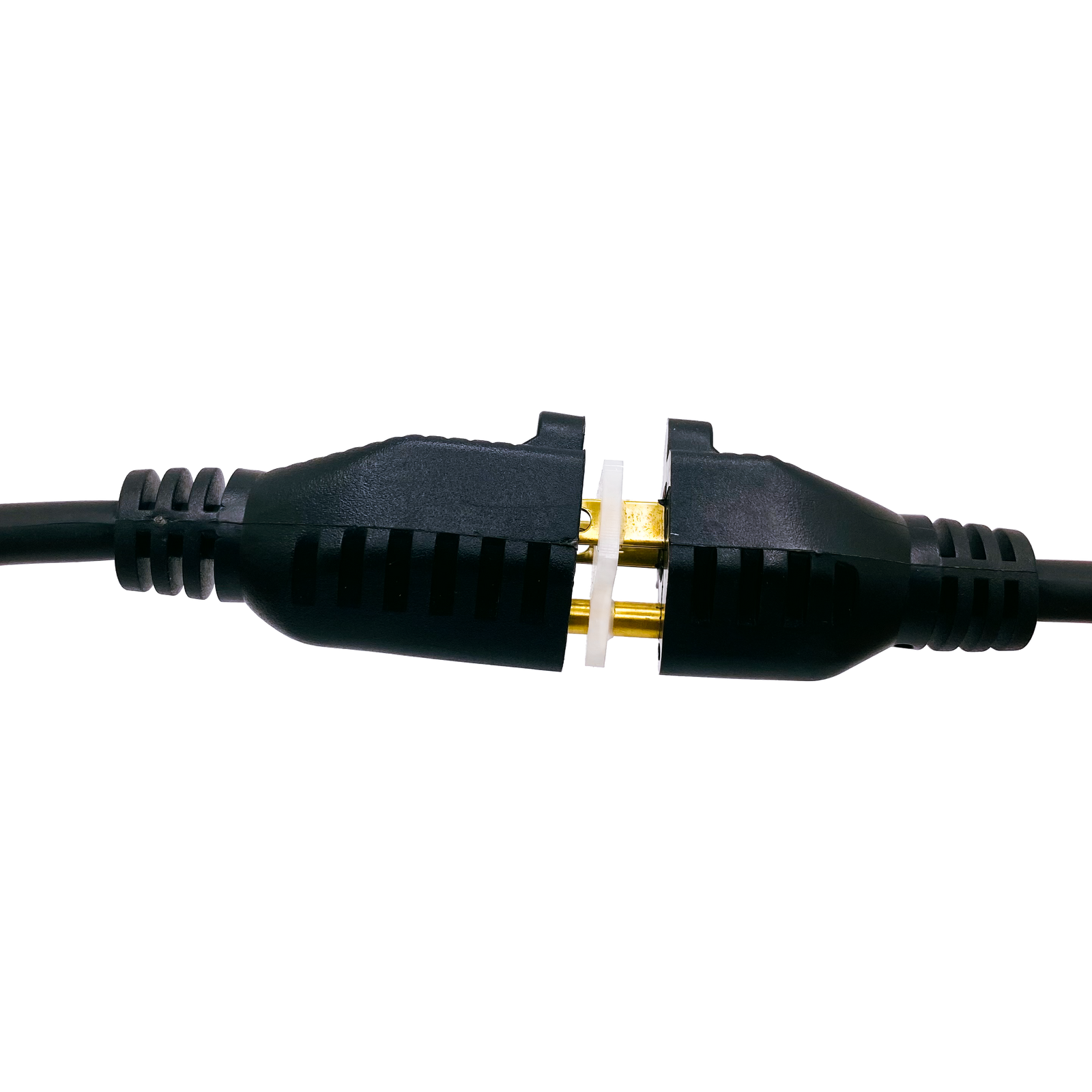"I will not use this in my in my light show for one reason and that is cost . . . I'm gonna stick with my weatherproofing gaskets"
- Charlie, Christmas on Crestline
Product Review
Transcript
Folks, Charlie here from Christmas on Crestline.
Thanks for tuning in, and thanks for tuning in to a Tips and Tricks/Product Review/Water Meets Electricity episode.
Today, we're going to test the Twist and Seal Mini and see if it does what it advertises. It's going to keep your extension cords, your Christmas light cords, safe from moisture this holiday season.
So, the Twist and Seal Mini is what we're going to be testing today. I've done episodes before about how to waterproof your extension cords, how to waterproof your Christmas light cords, and today I'm going to test out the Twist and Seal Mini. Let me show you real quick what it looks like inside, then I'll be right back.
All right, here we have the Twist and Seal Mini. It looks a little bit like a mini submarine, or perhaps even a fishing lure. We have a few directions here on the back, but basically, you have these five latches, and you unlatch them all, and it opens up into a little coffin. Or, I'll call it a coffin for lack of a better phrase. It has this black soft plastic that goes around it as a type of seal. It feels pretty similar to the same type of rubber or plastic you have around your driver's side or your passenger side window in your car. It feels pretty much exactly like that same type of soft rubber.
So you put one end of your lights in here, the other end in here, you then close it, and you latch all five latches. That is supposed to keep it watertight. It also has these hooks here on the end for you to, you know, hang off of one thing or another. Kind of interesting, let's see if it works.
You can kind of see what it looks like there. Now, it says it's going to keep your cords free of moisture through by putting them in here and locking them inside of this unit. I can tell you right now, these are four dollars a pop. You can find them at your big box stores, you can get them at your hardware stores.
For me, right off the bat, I will not use this in my light show for one reason, and that is cost. As an 80,000 lights in our front yard translates to 8,000 cords. So if I were to buy enough of these to waterproof my 8,000 cords, I'm looking at tens of thousands of dollars. So, it does not make economic sense for me.
If this does work, I think these could be used for inflatables if you have a few sets in your yard. But for an animated Christmas light show like what I have, I'm gonna stick with my weatherproofing gaskets, regardless if this works today or not, just because of cost.
So, does it work? Let's find out.
So, I have just two strands here of Christmas lights, rolling green. These are LEDs, these are minis, and these are Holiday Time, if you're curious. These are just a big box store brand. These are not commercial grade lights. So, I have the male and the female here connected. I'm going to place them into the box.
What's in the box? I'm going to place them into the box as flat as I can, and then I'm going to shut this as well as I can.
Okay, put that there. I'm going to shut this, going to lock it into place. Lock it into place, let's see. Oh, I got the cord wrong. Make sure I get this right.
And this is another reason why if I had to do this eight thousand times, my hands might get a little bit sore. Let's see, do I have that? That's off a little bit as well, make sure... Boom, and I found it. If you lock in the sides before you lock in the middle, it does work out better.
Fair warning, tell you right now, it says on this label, "Don't try this at home." It says right here on the label to not submerge these. Well, I need to test them, so of course, I'm going to submerge them. I am going to plug these into a GFCI outlet over here to the side, and so if it does kick off, it's going to kick off just the outlet, it's not going to take out the whole house, not going to electrocute me, we should be good.
All right, so we have the... we're plugging in the lights. And it says right on the directions, it says, "Do not submerge them." But how in the world are we going to be able to test them, to find out if they actually do work unless we, in fact, submerge them?
These are designed to keep moisture out of your cords. So, you're going to have to test if moisture can get in there. I mean, that seems pretty logical to me.
So, I'm going to put these in here and we will lock down all five latches. Maybe these are a tad bit difficult to put in here, let's see here if I can get this in there. Boom, boom, boom, and boom.
So, we have all five locked down, let's go ahead and submerge them. Now, I'm not seeing any air bubbles coming up, that's probably a good thing. Don't see any air bubbles coming up, the lights aren't flickering or anything.
I gotta tell you though, from the very end, there's no rubber gasket really around the edges where the cords come out. To me, you're going to get a little moisture in there. I guess if these are just laying down in snow, you don't have driving rain, or they're not on the ground and you have only your yard flooded. But then again, not everybody lives in an environment or a region where you're going to have snow for Christmas. California, Florida, Australia, you're going to have warm, non-white Christmases. So, you may have more rain then you're going to have snow, sleet, things of that nature.
I can see this probably working well. Before I say that, let me see if there's any water in there. There are a few drops in there. It's not as soaked as I thought it would be, but there are a few drops of water in there. I thought this whole thing would actually flood because when you put the cords in there and you shut it, that's not watertight.
I guess, maybe, it depends on the thickness of the gauge of your cord, how well it shuts down.
Practical uses for this, if you have five or so inflatables. If you have two props you put out and nothing else, then yeah, this will probably work for you, to keep them mostly watertight.
I can see this actually working well if you have this plus a weatherproofing gasket in between the cords, which I have one here somewhere. So yeah, this is what I use for my show between all my extension cords. It's just a weatherproofing gasket. It's a plastic rubber gauge, and this one right here is designed for three prongs. It's pretty simple, you just put it on there and boom, moisture blocking gasket right there. And that's what I use.
I can see this working well if I couple that with this, and yeah, that probably would make it weatherproof. But that's what I use for my show, and I do that just because these things are, they're like 25 cents a piece when I get them on sale, versus four dollars.
So, that's what I use for my show. But, practical uses, I can see this working very well. Plus, it has the hooks if you need to hook something off your gutters. If you're worried about moisture getting into your gutters. If you do a roofline of Christmas lights and you're worried about the male and female ends just kind of laying on your gutters or laying on your roof and getting all that moisture and dirt and grime drive around it, then yeah, put it in this, and that would probably protect it on the roof. I could see that very easily, actually.
If you're interested in getting this, I will put a link down in the description below. So, if you want to try this out for yourself, maybe buy one or two to see if it does work for you and your show, by all means, go buy them.
Just wanted to give you guys another option to weatherproof or waterproof your extension cords or your Christmas lights. Weatherproofing, waterproofing is of a concern when it comes to decorating outside, especially for those of us in the hobby that do animated Christmas light shows. This is just another option out there for you to check out.
That's about it for today, I'm Charlie.




